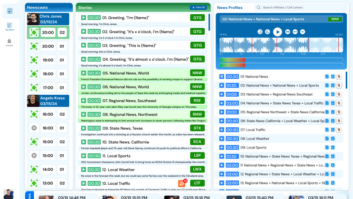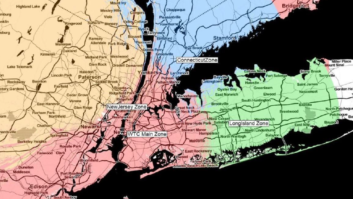The developers of the so-called Tomorrow Radio project, NPR, Kenwood and Harris, are pleased with test results of the supplemental channel concept for HD Radio. They’ve concluded, along with Hammett & Edison which evaluated the results, that the service area of a secondary audio channel for FM digital stations would fall within the 60 to 70 dBu service area of a typical FM station.
“The coverage area is robust,” NPR’s Mike Starling told Radio World in an exclusive interview at CES. The partners presented test results to the National Radio Systems Committee – soliciting
feedback before taking the results to the FCC.
Getting permission from the agency to allow stations to split their digital channels is one of the next steps the partners are pursuing. They may bundle tomorrow Radio with other remaining HD
Radio items needed for further FCC rules governing how broadcasters may implement digital radio,
such as the dual FM antenna concept. Or, partners said, they may pursue the supplemental audio
channel as a separate item.
They are also in discussions with radio reading services to see how it might be feasible to someday incorporate the ability to receive a reading service into an HD Radio using the supplemental channel.
Still to be worked out is whether commercial stations would need to pay a fee for doing the supplemental channel. Noncommercial stations are exempt from Ibiquity royalties for data services.
Sources indicated that whether there would be a fee and how much it would be for commercial
stations could be contentious. NAB has no position yet on the supplemental channel concept.
Supplemental Channel Concept Moves Forward
Supplemental Channel Concept Moves Forward












